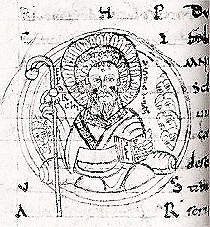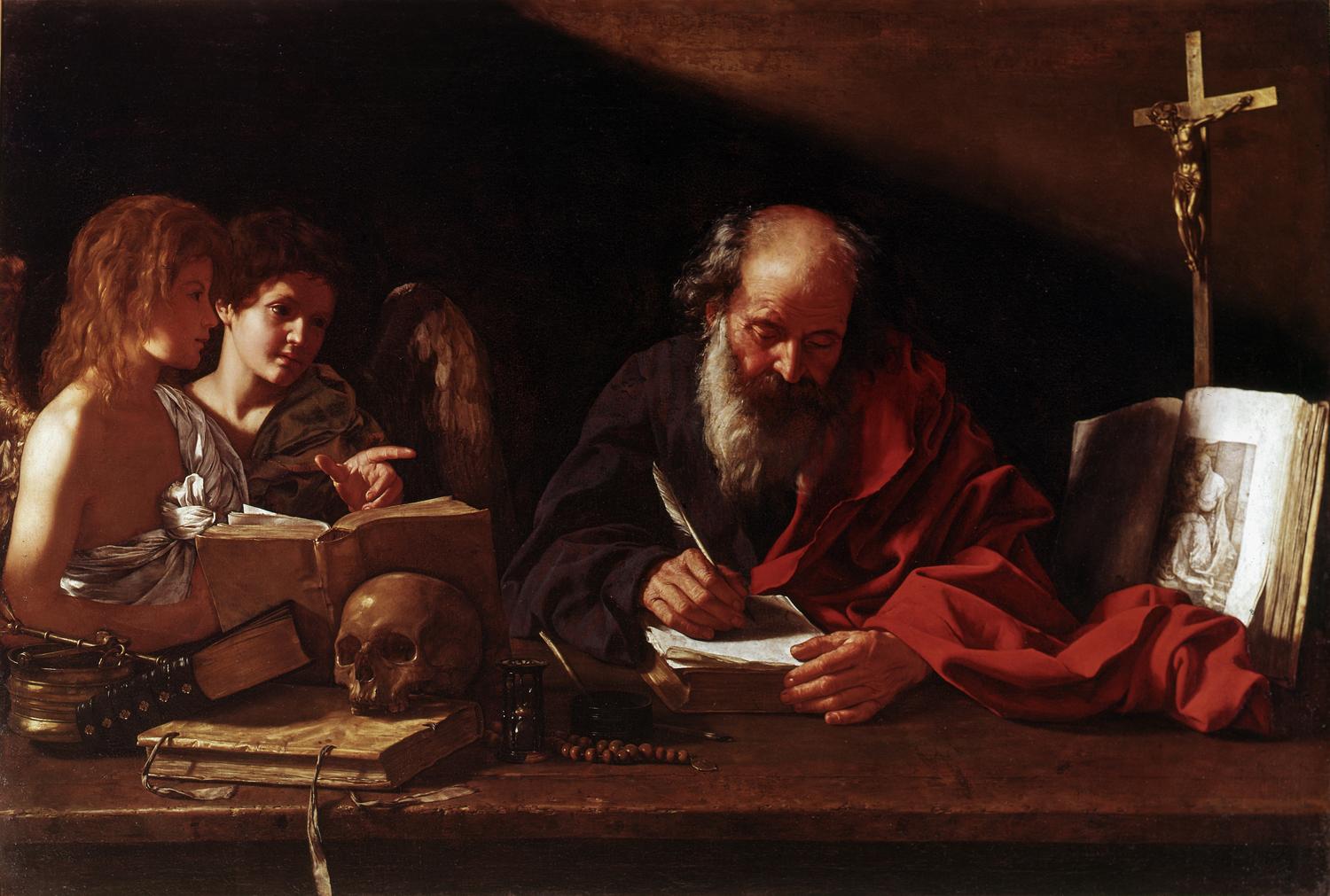|
Saint Cybard
Saint Cybard (or Eparchius, Eparque, Ybar, Ybard, Separchius, Cybar; 504 – 1 July 581) was a monk and a hermit who inhabited a cave beneath the walls of Angoulême for forty-four years. The Latin form of his name is ''Eparchius'', and it also appears in French as ''Éparche'' and ''Ybars'', as in the commune of Saint-Ybars. Life Cybard was probably born at Trémolat in the Périgord. He was ordained a priest by Aptonius III, the Bishop of Angoulême, in 542. His story is told in Gregory of Tours ''Historia Francorum'' (VI, 8). An anonymous hagiography entitled ''Vita et virtutes Eparchii reclusi Ecolismensis'' ("The life and virtues of Eparchius the recluse of Angoulême") tells how "alone he ... walked by night to the spot where he should be a recluse. Having finished his journey and his prayers, he lay down his head on a rock." That spot was, according to the same source, at "a remote location, far from the city, and from above on the side of the mountain trickled a stream of f ... [...More Info...] [...Related Items...] OR: [Wikipedia] [Google] [Baidu] |
Hermit
A hermit, also known as an eremite (adjectival form: hermitic or eremitic) or solitary, is a person who lives in seclusion. Eremitism plays a role in a variety of religions. Description In Christianity, the term was originally applied to a Christian who lives the eremitic life out of a religious conviction, namely the Catholic spirituality#Desert spirituality, Desert Theology of the Old Testament (i.e., the 40 years wandering in the Zin Desert, desert that was meant to bring about a change of heart). In the Christian tradition the eremitic life is an early form of Monk, monastic living that preceded the monastic life in the cenobium. In chapter 1, the Rule of St Benedict lists hermits among four kinds of monks. In the Roman Catholic Church, in addition to hermits who are members of religious institutes, the Canon law (Catholic Church), Canon law (canon 603) recognizes also Consecrated life#Other forms of consecrated life, diocesan hermits under the direction of their diocesan b ... [...More Info...] [...Related Items...] OR: [Wikipedia] [Google] [Baidu] |
Angoulême
Angoulême (; Poitevin-Saintongeais: ''Engoulaeme''; ) is a small city in the southwestern French Departments of France, department of Charente, of which it is the Prefectures of France, prefecture. Located on a plateau overlooking a meander of the river Charente (river), Charente, the city is nicknamed the "balcony of the southwest". The city proper's population is a little less than 42,000 but it is the centre of an urban area of 110,000 people extending more than from east to west. Formerly the capital of Angoumois during the Ancien Régime, Angoulême was a fortified town for a long time, and was highly coveted due to its position at the centre of many roads important to communication, so therefore it suffered many sieges. From its tumultuous past, the city, perched on a rocky spur, inherited a large historical, religious, and urban heritage which attracts a lot of tourists. Nowadays, Angoulême is at the centre of an agglomeration, which is one of the most industrialised ... [...More Info...] [...Related Items...] OR: [Wikipedia] [Google] [Baidu] |
Saint-Ybars
Saint-Ybars is a commune in the Ariège department in southwestern France. Population Inhabitants of Saint-Ybars are called ''Eparchois''. Geography The Lèze forms part of the commune's western border. See also *Communes of the Ariège department The following is a list of the 325 communes of the Ariège department of France France, officially the French Republic, is a country located primarily in Western Europe. Overseas France, Its overseas regions and territories include French ... References Communes of Ariège (department) Ariège communes articles needing translation from French Wikipedia {{Ariège-geo-stub ... [...More Info...] [...Related Items...] OR: [Wikipedia] [Google] [Baidu] |
Trémolat
Trémolat (; ) is a commune in the Dordogne department in Nouvelle-Aquitaine in southwestern France. Geography Trémolat is from the town of Périgueux and is situated along the river Dordogne in the Périgord region. Trémolat station has rail connections to Bordeaux, Bergerac and Sarlat-la-Canéda. Population Media The director Claude Chabrol filmed '' Le Boucher'' (1970) in Trémolat. See also *Communes of the Dordogne department The following is a list of the 503 communes of the Dordogne department of France France, officially the French Republic, is a country located primarily in Western Europe. Overseas France, Its overseas regions and territories include Fren ... References Communes of Dordogne {{Bergerac-geo-stub ... [...More Info...] [...Related Items...] OR: [Wikipedia] [Google] [Baidu] |
Périgord
Périgord ( , ; ; or ) is a natural region and former province of France, which corresponds roughly to the current Dordogne department, now forming the northern part of the administrative region of Nouvelle-Aquitaine. It is divided into four areas called the Périgord Noir (Black), named so for the truffles that can be found there, the Périgord Blanc (White), for chalk cliffs and quarries, the Périgord Vert (Green), for forests and forestry and the Périgord Pourpre (Purple), for wine and viticulture. The geography and natural resources of Périgord make it a region rich in history and wildlife, and the newly created Parc Naturel Régional Périgord-Limousin aims to conserve it as such. Périgord is noted for its cuisine, especially its duck and goose products, such as '' confit de canard'' and ''foie gras''. It is known as a centre for truffles in France. Périgourdine wines include Bergerac (red and white) and Monbazillac. History There are Roman ruins in Périg ... [...More Info...] [...Related Items...] OR: [Wikipedia] [Google] [Baidu] |
Bishop Of Angoulême
A bishop is an ordained member of the clergy who is entrusted with a position of authority and oversight in a religious institution. In Christianity, bishops are normally responsible for the governance and administration of dioceses. The role or office of the bishop is called episcopacy or the episcopate. Organisationally, several Christian denominations utilise ecclesiastical structures that call for the position of bishops, while other denominations have dispensed with this office, seeing it as a symbol of power. Bishops have also exercised political authority within their dioceses. Traditionally, bishops claim apostolic succession, a direct historical lineage dating back to the original Twelve Apostles or Saint Paul. The bishops are by doctrine understood as those who possess the full priesthood given by Jesus Christ, and therefore may ordain other clergy, including other bishops. A person ordained as a deacon, priest (i.e. presbyter), and then bishop is understood to hold ... [...More Info...] [...Related Items...] OR: [Wikipedia] [Google] [Baidu] |
Gregory Of Tours
Gregory of Tours (born ; 30 November – 17 November 594 AD) was a Gallo-Roman historian and Bishop of Tours during the Merovingian period and is known as the "father of French history". He was a prelate in the Merovingian kingdom, encompassing Gaul's historic region. Gregory's most notable work is the ('Ten Books of Histories'), also known as the ('History of the Franks'). is considered a primary source for the study of Merovingian history and chronicles the accounts of the Franks during the period. Gregory is also known for documenting accounts of religious figures, notably that of Martin of Tours. Biography Gregory was born in Clermont, in the Auvergne region of central Gaul. He was born into the upper stratum of Gallo-Roman society as the son of Florentius, Senator of Clermont, by his wife Armentaria II, niece of Bishop Nicetius of Lyon and granddaughter of both Florentinus, Senator of Geneva, and Saint Gregory of Langres. Relatives of Gregory held the Bishopr ... [...More Info...] [...Related Items...] OR: [Wikipedia] [Google] [Baidu] |
Abbey Of Saint-Cybard
The Abbey of Saint-Cybard was a Benedictine monastery located just outside the northern city walls of Angoulême. According to Gregory of Tours in the ''Historia Francorum'' (VI, 8), the monastery was founded by Saint Eparchius in the sixth century. Little is known about the institution after its founding until 852, when King Charles the Bald confirmed a series of gifts to the abbey made by Abbot Launus, who was also the bishop of Angoulême. The Abbey suffered along with other monasteries and cities of the region during the Viking raids of the ninth century, being sacked in 875. It adopted the Benedictine rule in 938. Between 1075 and 1087 Count Fulk of Angoulême handed Saint-Cybard over to the Cluniac abbey of Saint-Jean-d'Angély Saint-Jean-d'Angély (; Saintongeais dialect, Saintongeais: ''Sént-Jhan-d'Anjhéli'') is a Communes of France, commune in the Charente-Maritime Departments of France, department in southwestern France. The commune has its historical origins ... [...More Info...] [...Related Items...] OR: [Wikipedia] [Google] [Baidu] |
La Rochefoucauld (Charente)
La Rochefoucauld (; Limousin: ''La Ròcha Focaud'') is a former commune in the Charente department in southwestern France. On 1 January 2019, it was merged into the new commune La Rochefoucauld-en-Angoumois. 28 September 2018, p. 10 It lies very close to the line which delineated and during |
Patron Saint
A patron saint, patroness saint, patron hallow or heavenly protector is a saint who in Catholicism, Anglicanism, Eastern Orthodoxy or Oriental Orthodoxy is regarded as the heavenly advocate of a nation, place, craft, activity, class, clan, family, or person. The term may be applied to individuals to whom similar roles are ascribed in other religions. In Christianity Saints often become the patrons of places where they were born or had been active. However, there were cases in medieval Europe where a city which grew to prominence obtained for its cathedral the remains or some relics of a famous saint who had lived and was buried elsewhere, thus making them the city's patron saint – such a practice conferred considerable prestige on the city concerned. In Latin America and the Philippines, Spanish and Portuguese explorers often named a location for the saint on whose feast or commemoration day they first visited the place, with that saint naturally becoming the area's patron ... [...More Info...] [...Related Items...] OR: [Wikipedia] [Google] [Baidu] |
Feast Day
The calendar of saints is the traditional Christian method of organizing a liturgical year by associating each day with one or more saints and referring to the day as the feast day or feast of said saint. The word "feast" in this context does not mean "a large meal, typically a celebratory one", but instead "an annual religious celebration, a day dedicated to a particular saint". The system rose from the early Christian custom of commemorating each martyr annually on the date of their death, their birth into heaven, a date therefore referred to in Latin as the martyr's ''dies natalis'' ('day of birth'). In the Eastern Orthodox Church, a calendar of saints is called a ''Menologion''. "Menologion" may also mean a set of icons on which saints are depicted in the order of the dates of their feasts, often made in two panels. History As the number of recognized saints increased during Late Antiquity and the first half of the Middle Ages, eventually every day of the year had at l ... [...More Info...] [...Related Items...] OR: [Wikipedia] [Google] [Baidu] |





